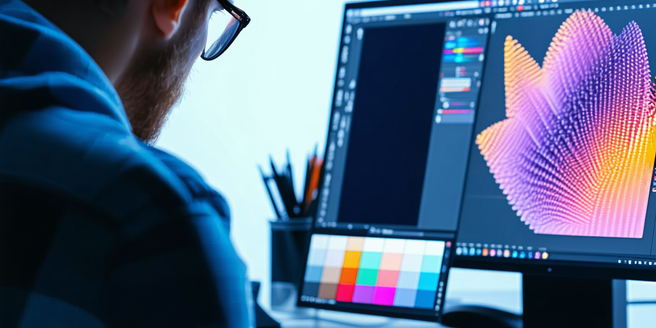High-resolution Laptops For Design Precision

Why High-Resolution Matters in Design
High-resolution matters in design, offering clarity and detail essential for precision. Designers rely on displays that present their work accurately, aiding in color matching and fine adjustments. Higher pixel counts provide sharpness that enhances visualization, reducing pixelation and ensuring artifacts don’t mar intricate designs. This clarity is critical during editing, where spotting differences means the difference between a good design and a perfect one. High-resolution displays minimize eye strain, allowing designers to work longer without fatigue. By facilitating a crisp view of their creations, designers can catch mistakes earlier, streamlining the workflow. Thus, investing in high-resolution technology not only boosts creative output but also enhances professional capabilities, making it indispensable in graphic design industries.
Top Laptop Models for Graphic Designers
For graphic designers, choosing the right laptop makes all the difference. Apple’s MacBook Pro is a perennial favorite, with its Retina display and powerful performance, ensuring seamless multitasking. Dell XPS 15 is another contender, offering InfinityEdge display for immersive visuals. For those preferring Windows, Microsoft’s Surface Laptop Studio blends versatility with high-end specs, ideal for design applications. ASUS ZenBook Pro Duo adds an innovative touch with its secondary display, aiding multitasking and enhancing productivity. Lenovo ThinkPad X1 Extreme combines power with portability, perfect for on-the-go designing. These laptops not only provide high-resolution screens but also pack the processing power needed for modern design software, ensuring that graphic designers have the tools they need to bring their visions to life efficiently.
Key Features to Look for in a Design Laptop
When selecting a design laptop, several key features are crucial. Firstly, a high-resolution display is paramount; it ensures every detail is visible, enabling precise edits and true-to-life visualizations. Secondly, color accuracy and gamut should match industry standards to guarantee that work appears consistent across different devices. Thirdly, a powerful processor and sufficient RAM are necessary to handle demanding design applications without stuttering. Adequate storage, preferably SSD, provides rapid access to files and speeds up boot times. Additionally, good battery life and portability allow for designing on the move. Connectivity options like Thunderbolt ports offer fast data transfers and peripheral support. Lastly, ensure the laptop has a durable build, maintaining performance over prolonged use.
Balancing Performance and Portability
In the realm of design, balancing performance and portability is crucial. Designers need laptops that pack power without weighing them down. Performance is often linked to processor speed, RAM, and graphics capabilities, which dictate how well the machine handles resource-intensive tasks. Meanwhile, portability is defined by the laptop’s weight, size, and battery life, affecting how convenient it is to work from different locations. A bulky machine with top specs might offer ultimate performance but can be cumbersome for travel. Conversely, ultra-light machines excel in portability but may sacrifice power. Finding the ideal blend involves choosing devices with efficient processors and lightweight designs, facilitating a seamless transition between stationary and mobile work environments, enabling creative professionals to maintain productivity wherever they are.
Choosing the Right Screen Size and Resolution
Choosing the right screen size and resolution is paramount for design work. Larger screens offer more space to view intricate details and spread out tool palettes without crowding your workspace, while smaller screens increase portability but may require higher resolution to maintain clarity. A balance must be struck based on personal preference and workflow needs. High resolution is vital, ensuring crisp visuals and precision in detailed design tasks. Designers should ideally opt for 4K displays, providing clarity and color accuracy, essential for professional results. Whether investing in a 15-inch laptop for a wider view or a 13-inch for better mobility, ensure the resolution supports pixel-dense displays, crucial for accurate color reproduction and fine detail work. The right choice enhances both productivity and comfort.
Enhancing Your Workflow with Design Software
Enhancing design workflow hinges on integrating the right software. Applications like Adobe Creative Cloud provide comprehensive tools for designers, from Photoshop and Illustrator to Premiere Pro and After Effects. These programs offer advanced features essential for detailed work, facilitating creativity and technical precision. Workflows are further optimized by leveraging cross-software compatibility, allowing seamless transitions across different design stages. Integrating cloud storage services such as Dropbox or Google Drive ensures project files are accessible, fostering collaboration. Additionally, with plugins and extensions, designers can tailor software functionalities to suit specific project needs, improving efficiency. Emphasizing automation through scripts or actions quickens repetitive tasks, freeing up time for creative exploration. Thus, intelligently employing design software not only streamlines processes but also boosts innovative potential.